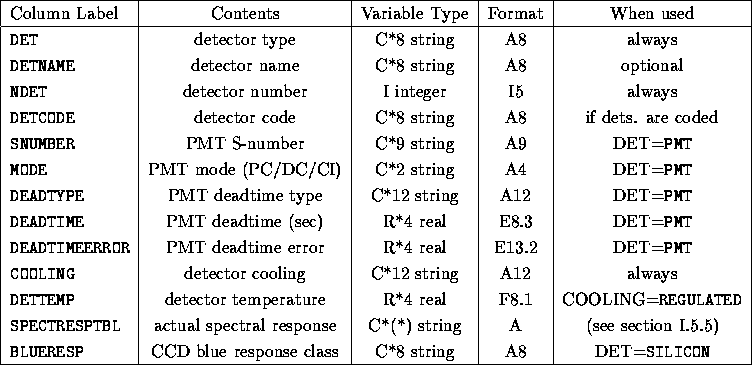 C.
C.
As the stability of zero-points and transformation coefficients depends partly on the detector temperature, information must be given on the detector cooling arrangements. This is stored in a character column called COOLING, which may contain the strings 'REGULATED' if an active closed-loop cooling system is used (either thermoelectric or some other servo-controlled cooling); 'UNREGULATED' if the tube is cooled in some way, but not regulated; 'ICE' if ordinary (water) ice is used as coolant; 'DRYICE' if dry ice (solid carbon dioxide) is used with out a heat-transfer fluid; 'MEASURED' if the temperature is measured but not regulated; or 'NONE' if the PMT runs at ambient temperature.
One should be careful not to push temperature-regulated systems beyond their capabilities. A servo-controlled system that tries to cool all the time and never oscillates about its set point is, in fact, unregulated rather than regulated. As long as dark current is well below sky measurements, dark noise probably adds little to the photon noise from the sky, and additional cooling is unnecessary. If the dark current is kept a little above the minimum possible value, so that it remains in the strongly temperature-dependent regime, it serves as a useful indicator of tube temperature and health.
If dry ice is used with a low-viscosity heat-transfer liquid such as ethyl acetate or Freon-11, COOLING should be set to 'REGULATED'; but if dry ice is used with a viscous fluid such as alcohol, 'DRYICE' should be used. Note: Freon-11 is one of the CFCs most destructive to the ozone layer, and should be avoided.
If
COOLING= 'REGULATED',
a Real*4 column named
DETTEMP
should contain the estimated detector temperature in kelvins.
With dry ice and ethyl acetate, the value in
DETTEMP
should be 195,
corresponding to  C.
C.
If COOLING= 'MEASURED', detector temperatures should be part of the regular data stream. In this case, a Real*4 data column DETTEMP should be in the data files, rather than in the instrumental ``.tbl'' file. (Cf. the similar usage of FILTTEMP, and further details in the next section.)

Table: Detector columns of the instrument table file